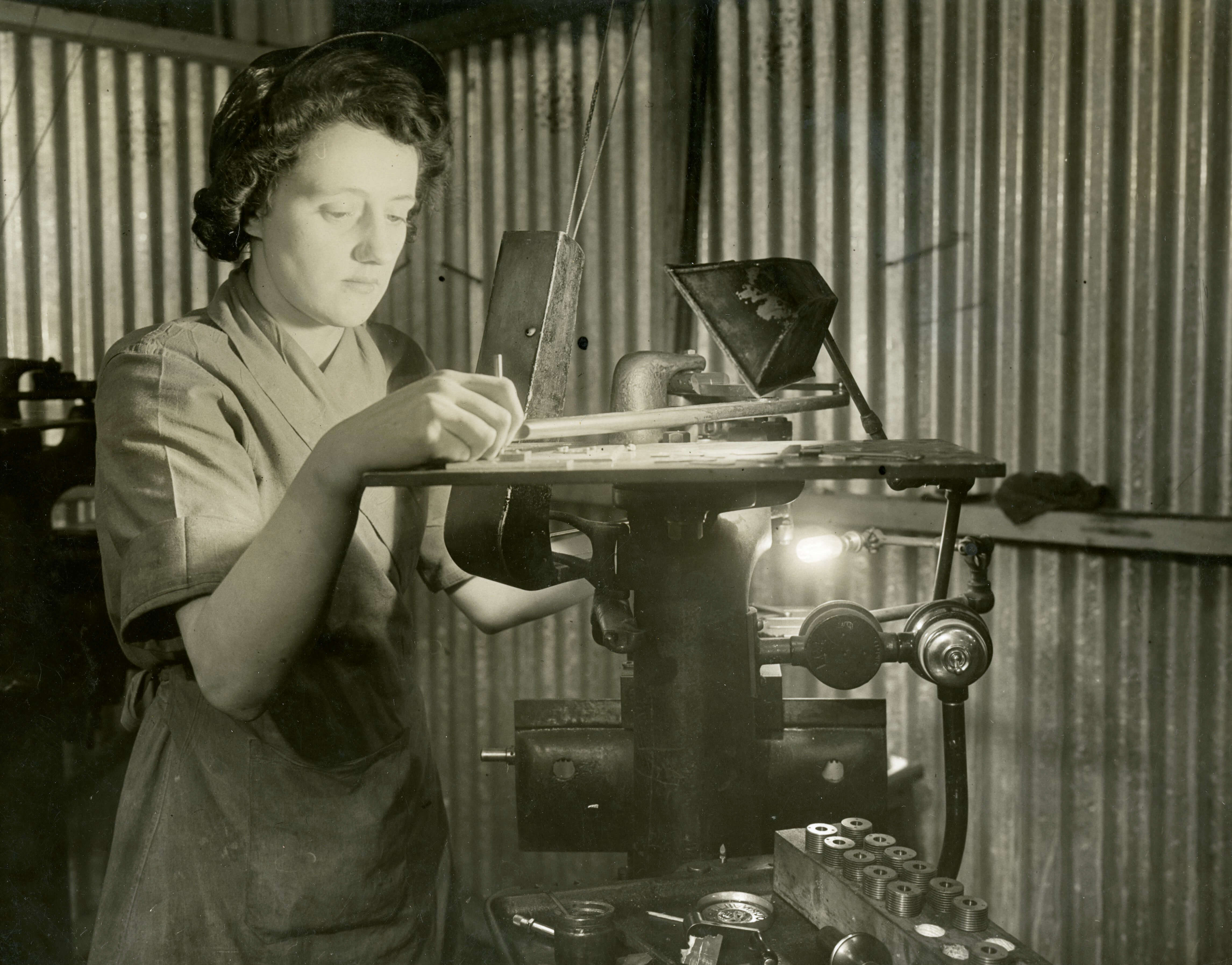Consequences of war
There are accounts of women being employed during the 19th and early 20th century as secretaries and cleaners, and in one instance as an assistant in the Museum, but they never worked in the factory. This all changed during the Second World War. Over a quarter of the male workforce at the Royal Mint joined the Armed Forces and many others were required to make munitions such as bullets and shell cases. By 1941 with so much to do, and so few men available to carry out the daily work of making coins, women were allowed on the factory floor for the first time.

Woman operating a lathe in the Royal Mint factory
The financial effort involved in defeating Germany and her allies let to a huge strain on the nation’s finances. One consequence which is sometimes overlooked, however, is that the cost of the war forced abandonment of the silver coinage. A consistent factor of the English coinage since the seventh century, the silver used in British coins was needed for industry and, perhaps more importantly, to pay back the 88 million ounces that the United Kingdom had borrowed from the United States. The Coinage Act, 1946, received Royal Assent in November 1946 and introduced the cupro-nickel alloy which we still use today. In order to create a clean break all cupro-nickel coins were dated 1947 and issues to the Banks began on 2 January.
